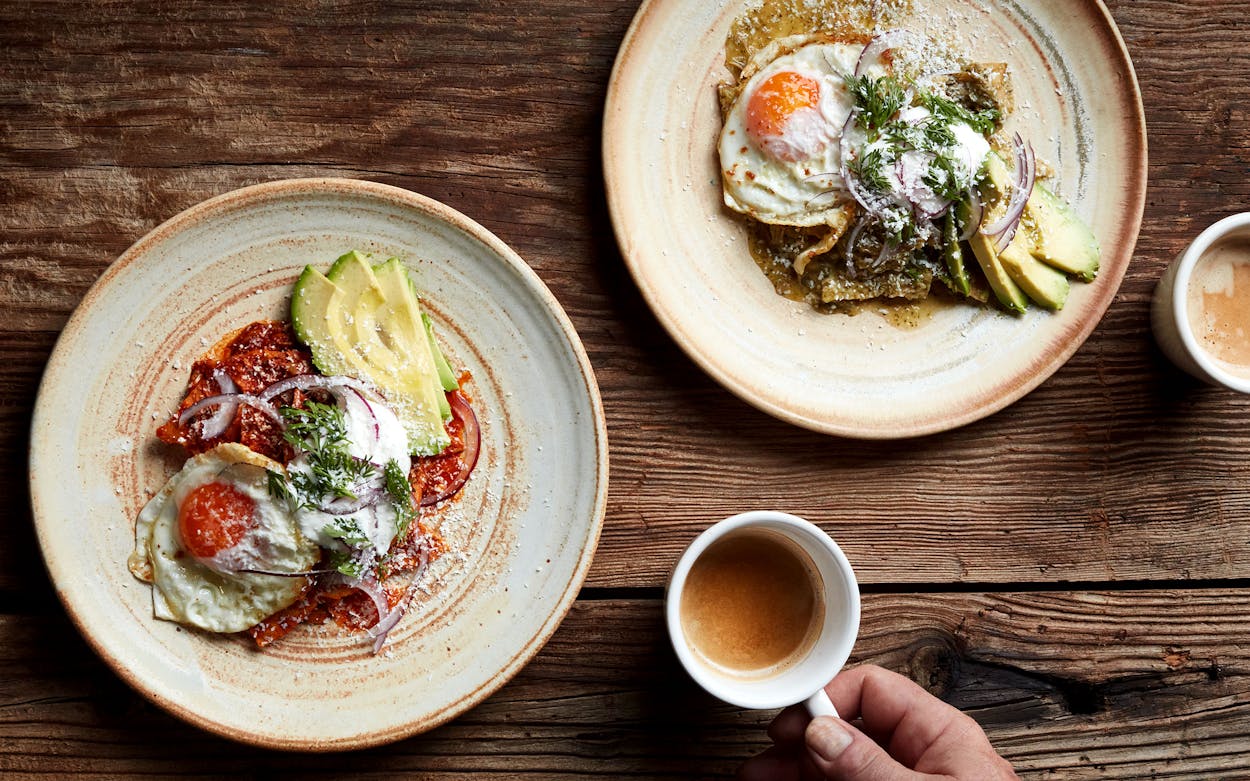Jesse Griffiths was sitting in a field sprinkled with bluebonnets in the spring of 2022 when his phone rang. The Austin-based chef wondered why his girlfriend would be calling, since she knew he was hunting turkeys. It didn’t take long for it to become a welcome interruption. She told him his cookbook had been nominated for a James Beard Media Award, a prestigious honor given to top cookbook authors, food journalists, and more in the nation.
His first cookbook, Afield, received a nod in 2013, but this recognition felt different. The Hog Book: A Chef’s Guide to Hunting, Preparing, and Cooking Wild Pigs was self-published and had photos of blood and guts—something most traditional cookbooks try to steer clear of. At the awards ceremony that summer, Griffiths was astounded to hear the title announced as the winner. “When they said ‘The Hog Book,’ I kind of lost my mind,” he says. “I cannot believe that we achieved this.”
It took more than a decade for Griffiths, chef-owner at Austin restaurant Dai Due, to write The Hog Book. Three years later, he’s following it up with The Turkey Book: A Chef’s Journal of Hunting and Cooking America’s Bird. Where his previous work was more like a “textbook,” Griffiths says, this one is a journal featuring entries from days in the field and in the kitchen.
Whereas the wild hog is destructive and invasive, the turkey is native to the Lone Star State and a focus of conservation efforts. In the early twentieth century, the eastern wild turkey population in Texas was decimated due to overhunting and development reducing their habitat, according to the Texas Parks and Wildlife Department. There have been successful efforts over the past several decades to repopulate using birds from neighboring states.
As a chef, Griffiths enjoyed that turkey offered a way to diversify a menu of mostly red meat. The bird—which he labels in the book as “at times, a bit dumb”—outsmarted him on several occasions. The challenge spurred Griffiths on. “The way you hunt them is very different in the way you hunt hogs,” he says. “There’s a lot of history and lore around it.”
In The Turkey Book, Griffiths takes readers along for one spring of hunting turkeys. It starts on a friend’s ranch in South Texas, then travels to southeastern Georgia, Oregon, and eastern Connecticut. He shares whom he hunted with, what lessons they learned, and how they cooked their harvest with recipes such as turkey sausage and cheese ravioli with red pepper sauce and turkey satay. If you are a fan of Whataburger’s breakfast specialty, you’ll likely be a convert to his Honey Butter Turkey Biscuit recipe.
Griffiths kept the components that made The Hog Book unique, including the butchery diagrams, the photos by Jody Horton (and, this time, Sam Averett), and the decision to self-publish. Griffiths wanted full editorial control, something that can get lost by going the traditional way. “There are times when you literally need to show blood and guts to portray what’s happening,” he says. “Some publishers get real shy about that. At that point, I feel like your words and vision are really diminished.”
When others ask him advice on which direction to go with their own book, Griffiths doesn’t try to sway them either way. “It’s up to you,” he says. “Publishers provide some great advantages. It’s really going to come down to what your needs are.” He credits social media and other changes in technology for the reach his books have had. “Would we have been able to self-publish fifteen years ago? Yes, but it would have been a flimsy little paperback that went nowhere,” he says. It seems as though Griffiths is comfortable taking the longer, less-traveled path if he feels the outcome will be better for it.
He started working in restaurants in his teens, moving up from being a bus boy in Denton. His culinary journey started as a basic need for a job, but in the intervening years, he developed a love for cooking and “the connectivity you can have between a food and its source,” he says.
After working as a butcher in restaurants, he became intrigued by the entire field-to-table process. And even though Griffiths came from a fishing family in North Texas, he didn’t start hunting until he was 30. He felt comfortable bringing his expertise in hunting hogs to his previous book, published in his mid-forties. Now 48, he had some learning to do.
“Turkeys were something I was approaching more from an amateur position,” he says. “It was through the lens of a newcomer, which is something I thought was important to convey. Like, ‘Hey, if you’re new to this, we can walk through this together.’ ”
- More About:
- Hunting & Fishing
- Hunting
- Cookbooks
- Austin






